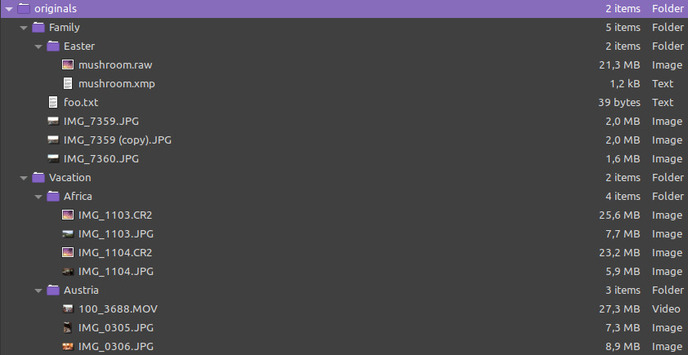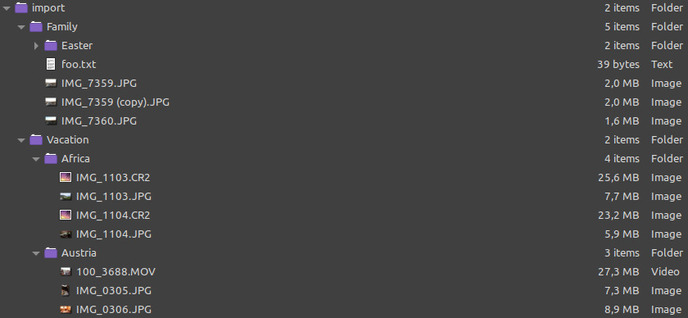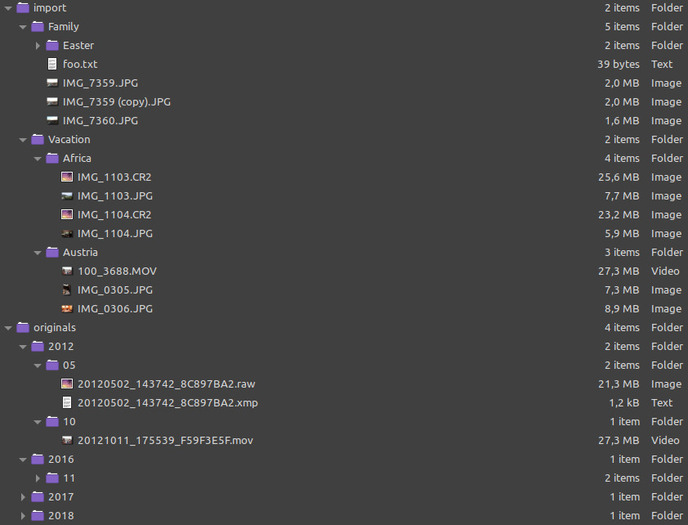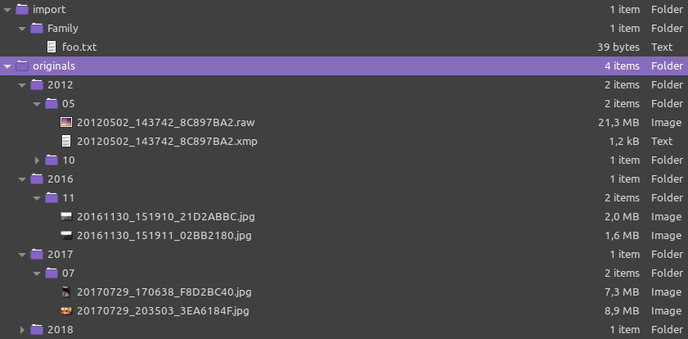Indexing Your Library¶
Most users with an existing library will want to index their originals directly without using the optional import feature, leaving the file and folder names unchanged.
When importing, files are first transferred from a temporary folder to the originals folder. In the process, duplicates are automatically skipped, and the imported files are given a unique file name and are sorted by year and month.
Importing is also an efficient way to add files, since PhotoPrism does not need to search your originals folder to find new files.
Hidden files and folders that start with a ., @, _., or __ like __MACOSX are automatically ignored. Other names to be
ignored can be added to a .ppignore file in the originals or import folder it should affect.
You can put it either in the main folder or in a subfolder to limit the scope.
Indexing Originals¶
Use index if you want to index your photos and videos directly in the originals folder, leaving the file and folder names unchanged.
Your folder structure in originals might look like this:

During indexing:
- files will not be renamed or moved
- your existing folder structure is preserved, so you can later choose to have your folders appear as albums
- metadata from your files is read to create captions, titles, and locations for your photos
- thumbnails and optionally JSON and/or YAML files containing metadata are created
After indexing, the originals folder has not been changed in any way:

Advantages¶
- existing file and folder names remain unchanged.
- you can search your images by their current name and location
- indexing is usually faster because no files have to be copied or moved
You can move media files between the different directories within your originals folder. The indexer detects this and updates the path automatically when running the next time.
Importing Files¶
Importing is more efficient when adding files as you don't need to re-index all originals to find new photos and videos. Uploads will also be treated as import, you can't directly upload to originals (yet).
Your initial folder structure in import might look like this:

During import:
- files are copied or moved from their source directory to the originals folder
- duplicates are automatically skipped, "Move" also deletes them in the source directory as if they were successfully moved
- imported files are given a unique file name and are sorted by year and month
- the original file name is indexed as a file property
- all imported files are indexed, the rest remains in the import folder
After importing with "Copy" (default setting), your folders might look like this::

After importing with "Move" your folders might look like this:

Advantages¶
- unsupported files stay untouched in the import directory
- no duplicates in your originals directory
The original file and folder names are used to extract keywords. For example, when you index a folder with the path "Vacation/Africa", all files from this folder will get the keywords "vacation" and "africa".
Conclusion¶
In case your picture library is not well organized and/or you have many duplicates, you may consider importing your files as this will remove duplicates. Be aware that imported files are given a unique file name and are sorted by year and month.
Provided you have a well-organized library with meaningful file and folder names, it is best to index your originals directly and leave the file and folder names unchanged.